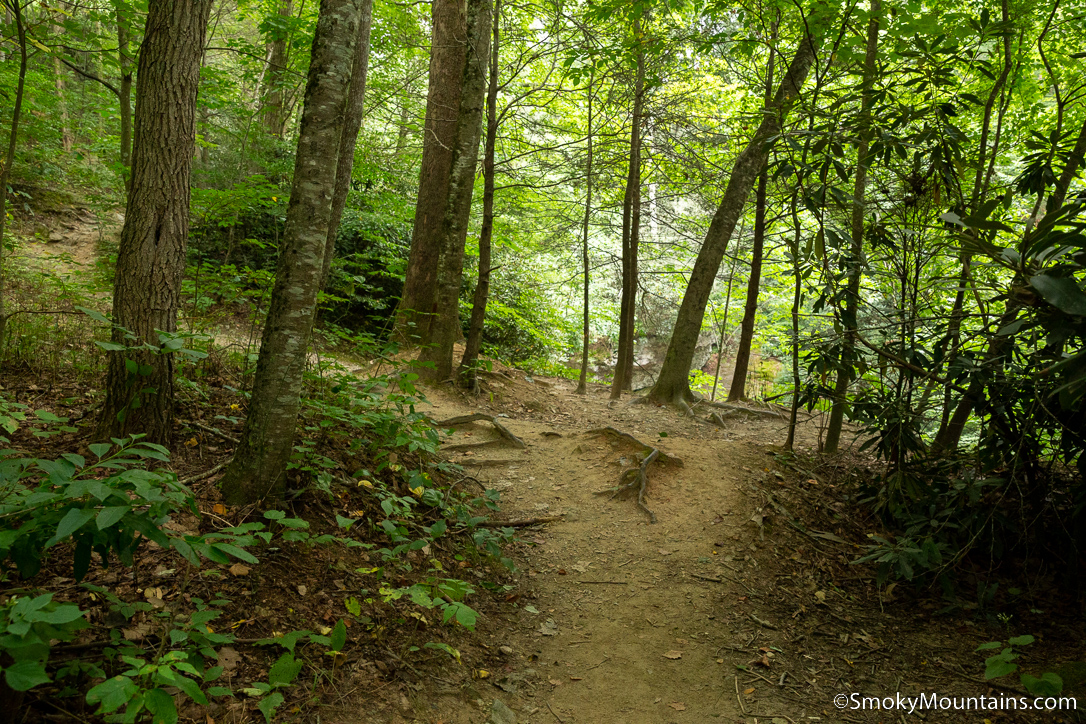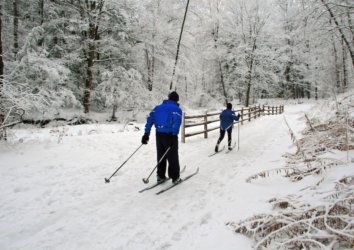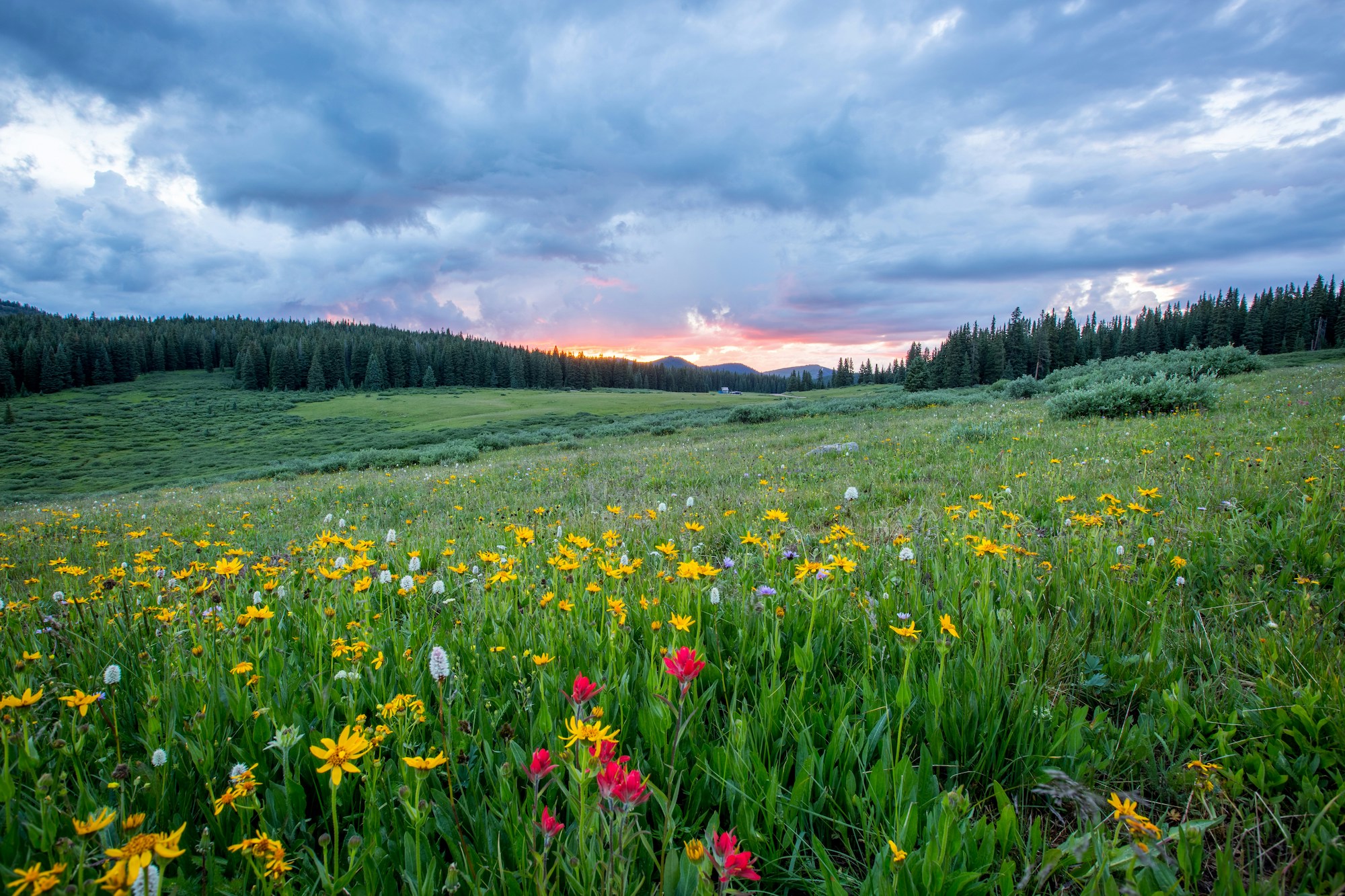One of the joys of hiking in Great Smoky Mountains National Park is the sheer variety of trails. With more than 800 miles of them maintained in this most-visited U.S. national park, there are routes suitable for just about everybody: young and old, super-fit and *ahem* less so, those with loads of time to explore and those who have to pack their sightseeing into a few hours.
Needless to say, you don’t need to pound out a lot of mileage to experience the rich beauty (and rich history) of the Great Smoky Mountains.
Here we’ve rounded up some of the shortest hikes in the park that nonetheless are well worth rambling!
Laurel Falls Trail – 2.4 miles
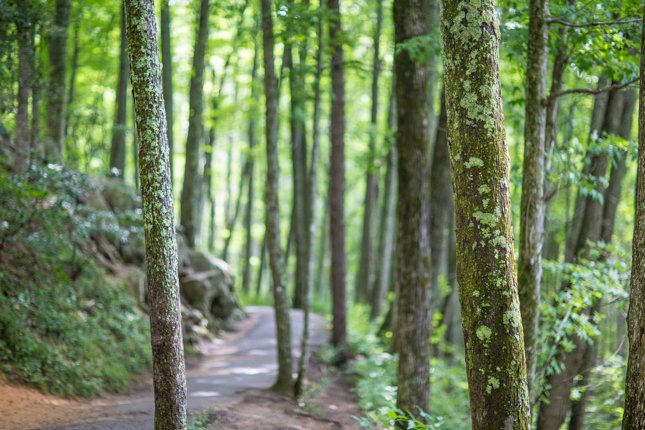
The two-section horsetail tumble of Laurel Branch, totaling 80 feet, makes one of the most popular destinations in the entire national park. Laurel Falls is a stunner, and the perfect choice for hikers who like a postcard payoff as a turnaround point on an out-and-back trek.
Trail Difficulty: Easy
Estimated Time to Complete: 1.5 hours
The Laurel Falls Trail is the longest of several paved paths in Great Smoky Mountains National Park, which as the round-trip distance suggests isn’t necessarily saying much. Nonetheless, the path is decently steep and uneven in places, so there’s going to be a little exertion involved, and you should definitely keep close tabs on any kids in your hiking party.
Following the gorge of Laurel Branch—including the tight whitewater conduit of the “Devils Chute”—you’ll get plenty of opportunities to eyeball the mountain laurel for which the creek’s named; hikers in May can revel in its extravagant blooms. Once at the falls, you can walk between the upper and lower tiers on a bridge—getting (safely) up close and personal with one of the park’s standout plunges!
Clingmans Dome – 1.3 miles

While you can drive nearly all of the way to the top of the highest peak in the Great Smoky Mountains, reaching the very summit and its observation tower requires hoofing it up a short paved path. Its not-nothing grade gives you a nice sense of having earned the privilege of standing atop this 6,643-foot peak, third-loftiest in the eastern U.S., and also the apex of the 2,000-mile-long Appalachian Trail.
Trail Difficulty: Easy
Estimated Time to Complete: 1 hour, 30 minutes
When it’s clear, the sightlines from the Clingmans Dome crown extend 100 miles or more. Perhaps the all-out best time to make the climb is during the fall when this top-of-the-world vantage delivers a splendid view of the Great Smokies’ multicolored foliage.
Cove Hardwoods Nature Trail – 0.9 miles

Photo Credit by @denlynhug on Instagram
Immerse yourself in the splendor of the cove hardwood forest—that incredibly luxuriant, biologically diverse ecosystem blanketing hollows and lower stream courses in the Southern Appalachians—on this self-guided interpretive path above the West Prong of the Little Pigeon River. This is the kind of path to slow down on: to really and truly mosey, drinking in the sights and sounds of this cathedral-like place.
Trail Difficulty: Easy
Estimated Time to Complete: 40 minutes
Hefty hemlocks, maples, yellow birches, basswoods, Carolina silverbells, and other trees form an impressive canopy, while in spring the groundcover erupts in a mesmerizing display of wildflowers: trillium, fringed phacelia, spring beauty, and more. The Cove Hardwoods Nature Trail kicks off from the Chimney Tops Picnic Area, so you’re all set for a post-mosey munch, to boot!
Grotto Falls – 2.6 miles
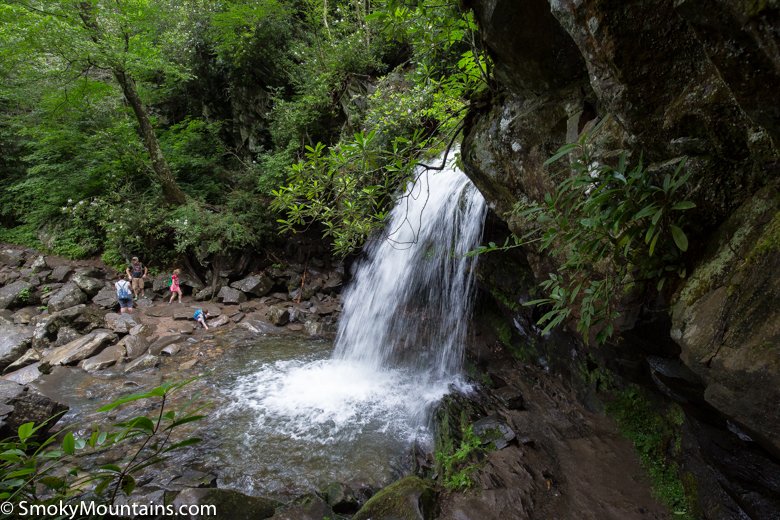
A popular walk off the Roaring Fork Motor Nature Trail, Grotto Falls is a magical place ideal for hikers strapped for time or looking for a very easy dip into the lush wilds of the Great Smokies. The well-graded path ascends gradually some 520 feet through grand hemlocks and hardwoods, an undemanding trail serving up another one of those major payoffs.
Trail Difficulty: Easy
Estimated Time to Complete: 1 hour, 30 minutes
The Roaring Fork has an exceptionally steep course as it flumes off the great slopes of Mount LeConte to the West Prong of the Little Pigeon, so its flow comes broken by countless cascades and falls. Grotto Falls is one of them: a roughly 25-foot drop over an alcoved ledge into a plunge pool. You can actually walk behind the sheet of water thanks to that concavity, reveling in the cool, misty, dreamlike ambience.
Spruce Fir Nature Trail – 0.35 miles

This is the shortest and probably the least-known of the hikes we’re spotlighting here, but it’s a great example of the hidden treasures Great Smoky Mountains National Park is full of. This mostly level interpretive path, which partly proceeds along boardwalks, provides one of the most accessible and least-strenuous ways to soak up the flavor of a Southern Appalachian spruce-fir forest, the evergreen community that grows along the highest ridgetops and peaks.
Trail Difficulty: Easy
Estimated Time to Complete: 20 minutes
This shadowy, fragrant forest has much in common—both in terms of species and atmosphere—with boreal woods thousands of miles north. The two dominant trees are Fraser firs (“she-balsams” in local parlance) and red spruces (“he-balsams”). You’ll see plenty of dead and downed firs: the sad result of infestation by an exotic (non-native) insect, the balsam woolly adelgid, which was inadvertently introduced from Europe more than a century ago. It’s impacting high fir stands throughout the Great Smokies and surrounding ranges.
Walker Sisters Place – 4.0 miles

Photo Credit by @jodi.mstevens on Instagram
Hike the Little Brier Gap Trail out of Metcalf Bottoms for a fascinating glimpse at the homesteading history of Great Smoky Mountains National Park. A mile beyond the one-room Little Greenbrier Schoolhouse, you’ll reach the cabin of the Walker Sisters, built of tulip-poplar logs and acquired in the 1870s by the Civil War veteran John N. Walker. He and his wife Margaret had 11 children, among them seven daughters. One of these sisters, Sarah Caroline, married and left the farmstead, but the other six—Margaret, Polly, Martha, Nancy, Louisa, and Hettie—stayed on at the cabin and inherited their father’s land after he died in 1921.
Trail Difficulty: Easy
Estimated Time to Complete: 1 hour, 40 minutes
While Nancy passed away a decade later, the other five sisters remained in their mountain home and stayed there thanks to a special lease even after Great Smoky Mountains National Park was established. For a time they welcomed park visitors to their cabin, situated in what came to be called “Five Sisters Cove.” By the late 1960s, all of the sisters had died, but their cabin remains as a testament to their family’s long presence here and an overall symbol of the bygone pioneer communities once extensively sprinkled through the Great Smoky Mountains.
Short But Sweet
None of the above trails will win any awards in the length or difficulty departments, but that certainly doesn’t mean they aren’t worth checking out. Indeed, these kinds of short, well-maintained footpaths are the main way many visitors to Great Smoky Mountains National Park will experience this incredible place away from the busy blacktop—and doing so, even just for a half-hour, is highly recommended!
Interested in some other hikes? Take a look at the top hikes in the area!

